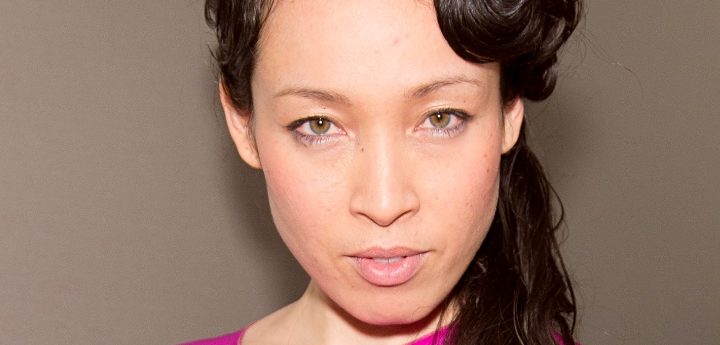On the surface the quiet port city of Gothenburg doesn’t seem like it would harbor much soul music but it comes through in the dreamy rhythmical shifting moody creature that is Little Dragon. The four-piece band blends R&B, new wave, electronica and experimental pop.
Noted authorities on the matter from OutKast’s Big Boi and Raphael Saadiq to Damon Albarn of Gorillaz all recognize the fire — each has tapped the group to collaborate on recent and/or upcoming projects. And it seems that the rest of the world is starting to catch on to what tastemakers from BBC’s Gilles Peterson and the DJs at Los Angeles’ influential KCRW have known for years.
They might have lots of boldface fans now, but Little Dragon built their name the old-fashioned way: slowly and through word of mouth. Singer Yukimi Nagano, drummer Erik Bodin and bassist Fredrik Wallin began making music together as friends in high school. “Our way of spending time together was listening to or playing music” Yukimi recalls of those days in the 1990s. “We weren’t so good at promoting ourselves or thinking of any kind of plan. All we knew is we wanted to just write and work as little as possible on anything else.”
After adding Håkan Wirenstrand, a keyboardist from rural Småland and moving in together at a Gothenburg art collective known as the Seal Colonie, the group took the name Little Dragon — a reference to Yukimi’s fiery countenance during recording sessions. While holding odd jobs and contributing to other people’s projects (Yukimi has sung lead vocals on different dance singles, she and Erik played percussion and sang back-up vocals with Swedish troubadour José González), the four spent all their free time together crafting their own with songs like the propulsive Test and the haunting minor key dub song Forever. It was these two tracks that made up Little Dragon’s first release, a 2006 vinyl-only single on tiny label Off the Wall Records. Though only 1,000 copies were pressed, the record’s impact was felt immediately in England, where it became an underground classic and Rough Trade “single of the week“. Thereafter London’s Peacefrog Records commissioned the group’s first album. With its unusual cover artwork (drawn by Yukimi’s father in the ‘70s) and playful, imaginative videos (for “Twice, “Constant Surprises” and “After the Rain”), Little Dragon’s self-titled debut offered a distinctive and wondrous visual aesthetic to go with its unique, enchanting sound. Despite their CD being available only as an import in the US, the group sold out clubs across the country during their first American tour in ‘08. A smattering of positive press clippings began recognizing Nagano and her understated yet unmistakable voice.
Little Dragon’s second album, Machine Dreams, a more up-tempo set with ‘80s influences like Prince and Depeche Mode working their way into the mix, followed in 2009. That same year the single Twice was featured in an episode of primetime drama Grey’s Anatomy, turning a new set of mainstream fans on to the group. Meanwhile, Gorillaz front man Damon Albarn tapped Little Dragon to appear on their album Plastic Beach and to open — along with De La Soul — their arena-filling world tour. Also in 2010, the group appeared on “If You Return” from Maximum Balloon, aka the solo project of Dave Sitek from TV on the Radio.
Little Dragon kicked off 2011 with a headlining tour of the U.S. and thanks to a recommendation from super fan Questlove of the Roots, a performance on Late Night with Jimmy Fallon in March. In May, Little Dragon appeared on the track “Just Don’t” from Raphael Saadiq’s Stone Rollin’, a record some are already calling the album of the year. Big Boi and DJ Shadow called to invite the group to work on new music. And in July they will release Ritual Union, an album which finds futuristic, trance-like rhythms mixed with the soulful vibes of their debut LP plus upfront and danceable sounds of Machine Dreams.
As with each of their previous albums, Little Dragon did all of the recording themselves at the Seal Colonie, the same place where they all lived together in their early days. “We’re all about writing in our space, our bubble” Yukimi says. “We haven’t really recorded in any fancy studios. We’d rather be in our junkyard.”
While their recordings are always impressive, it is in the live setting where the Dragon really comes alive. Seemingly loose and improvisational but actually tight as a drum, Bodin, Wirenstrand and Wallin dig a deep pocket that might make James Brown proud. Nearly as striking is the culturally diverse crowd that somehow turns up in every city. Little Dragon shows bring out an unlikely mix of hip-hop heads in fitted caps, ravers, stoners, hipsters, hippies, middle aged panthers and studious musician types. “I think that’s kind of ideal” Yukimi says of Little Dragon’s eclectic fan base. “That’s how, if I wished for a crowd, I would want it.” and no doubt, if that crowd could invent a band, Little Dragon is what they’d come up with.

